Mercedes Shocker Balloon
Product Details:
- Finish Good
- Weight 3 Kilograms (kg)
- For Use In Automobile Industry
- Warranty Working
- Dimension (L*W*H) 5*5*5 Foot (ft)
- Color Black
- Product Type Mercedes Shocker Balloon
- Click to View more
Mercedes Shocker Balloon Price And Quantity
- 15 Box
Mercedes Shocker Balloon Product Specifications
- Black
- 5*5*5 Foot (ft)
- Working
- Long Years
- Plastic
- Mercedes Shocker Balloon
- 677874889
- Good
- 3 Kilograms (kg)
- Automobile Industry
Mercedes Shocker Balloon Trade Information
- 1000 Box Per Day
- 1 Days
- Cardboard box and cover with sack
- Asia, Australia, Central America, North America, South America, Eastern Europe, Western Europe, Middle East, Africa
- All India
Product Description
It seems like you might be referring to the Audi Airmatic suspension system, which is an advanced air suspension system used in some Audi vehicles. Here's an overview of what the Airmatic system entails:
Audi Airmatic Suspension System.
1. Air Suspension Basics
- The Airmatic suspension is an adaptive air suspension system that uses air springs instead of traditional coil springs.
- It allows for variable ride height adjustment and damping control, enhancing both comfort and handling.
2. Components
- Air Springs Replace conventional coil springs and use compressed air to support the vehicle's weight. They can adjust stiffness based on driving conditions.
- Air Compressor Supplies compressed air to the air springs as needed.
- Electronic Control Unit (ECU) Manages the suspension system, collecting data from sensors and adjusting the suspension settings in real-time.
- Height Sensors Monitor the ride height of the vehicle and adjust air spring pressure to maintain a consistent level.
3. Features
- Adaptive Damping Adjusts the stiffness of the suspension based on road conditions and driving style.
- Variable Ride Height Can raise or lower the vehicle's ride height for improved ground clearance or aerodynamics.
- Comfort and Sport Modes Allows drivers to choose between different suspension settings for a softer ride or more responsive handling.
4. Benefits
- Comfort Provides a smoother ride by absorbing road imperfections more effectively than traditional suspension systems.
- Handling Enhances stability and cornering performance by minimizing body roll and maintaining optimal tire contact with the road.
- Versatility Can adapt to various driving conditions, from smooth highways to rough terrain, improving overall driving experience.
5. Maintenance
- Regular maintenance is essential to ensure proper functioning of the Airmatic system.
- Air springs and compressor components may require periodic inspection and replacement if they develop leaks or wear out.
Audi Airmatic Balloon
If by "Airmatic balloon" you meant the air springs used in the Audi Airmatic system, they are indeed key components responsible for supporting the vehicle's weight and adjusting the suspension characteristics. These air springs resemble balloons in their function, using compressed air to provide a cushioned ride and flexibility in adjusting the vehicle's ride height and stiffness.
In summary, the Audi Airmatic suspension system is known for its advanced technology and ability to deliver a comfortable and controlled driving experience. It combines air springs, electronic controls, and adaptive damping to offer superior ride quality and handling dynamics compared to traditional suspension setups.The rear suspension system of the Audi A6, particularly in models equipped with air suspension (often referred to as "Air Suspension" or "Adaptive Air Suspension"), includes components commonly known as "air shock absorbers" or "air springs." These are sometimes colloquially referred to as "shocker balloons." These components provide adjustable ride height and adaptive damping, enhancing both comfort and handling.
Key Components of the Audi A6 Rear Air Suspension System:
-
Air Springs (Air Shock Absorbers):
- These replace traditional coil springs with air-filled bladders or balloons, allowing for adjustable ride height.
- The air springs are inflated or deflated by an air compressor to adjust the suspension according to driving conditions and load.
-
Air Compressor:
- Pumps air into the air springs to adjust the suspension height.
- Often includes a dryer to remove moisture from the air, preventing corrosion and damage to the system.
-
Control Module:
- Manages the air suspension system, adjusting the air springs based on sensor inputs.
- Can provide different driving modes (e.g., comfort, sport) which change the suspension characteristics.
-
Height Sensors:
- Monitor the vehicle's height and provide data to the control module.
- Ensure that the vehicle remains level regardless of load distribution.
-
Air Lines:
- Carry compressed air from the compressor to the air springs.
- Must be maintained to prevent leaks which can affect the suspension performance.
Features and Benefits:
-
Adjustable Ride Height:
- Allows the driver to raise or lower the vehicle for different driving conditions, such as off-road or highway driving.
- Enhances ground clearance when needed and improves aerodynamics at higher speeds by lowering the vehicle.
-
Improved Ride Comfort:
- The air suspension system can adjust to provide a smoother ride over rough roads by varying the air pressure in the springs.
- Reduces road noise and vibrations.
-
Enhanced Handling:
- Provides better handling by adjusting the suspension stiffness and height for optimal performance.
- Adaptive damping can improve stability and control during dynamic driving.
Maintenance and Replacement:
-
Regular Inspection:
- Regularly inspect the air springs, compressor, and air lines for signs of wear or damage.
- Check for leaks, unusual noises, or changes in ride height which could indicate a problem.
-
Diagnostics:
- Use specialized diagnostic tools to read fault codes and perform system checks on the air suspension.
- Audi-specific diagnostic tools or professional services can help identify issues early.
-
Professional Service:
- Have the air suspension system serviced by qualified technicians familiar with Audi vehicles.
- Using genuine Audi parts or high-quality aftermarket components ensures compatibility and reliability.
Common Issues:
- Air Leaks:
- Leaks in the air springs or air lines can lead to a loss of pressure, causing the vehicle to sag or the compressor to run excessively.
- Compressor Failure:
- Over time, the air compressor can wear out or fail, requiring replacement.
- Sensor Malfunctions:
- Faulty height sensors can lead to incorrect adjustments or error messages.
Replacing the rear air suspension shocker balloon (air spring) on an Audi A6 requires attention to detail and proper tools. It's often recommended to consult the vehicle�s service manual or have the replacement done by a professional to ensure correct installation and system calibration.Car Shocker. Car Shock Absorber. Car Shocker Supplier. Airmatic Shock Absorber. Audi Car Shocker Supplier. Car Shocker Dealer. Car Shocker. Car Struct. Airmatic Shocker Supplier. Car Shocker. BMW Car Shocker. Unique Auto Spares. Car Shocker for Mercedes Benz. Car Shocker Dealer. Shocker Supplier. Car Shocker. Shocker. Jaguar Car Shocker Supplier. Shock Absorber Supplier. Shock Absorber. Shocker for Car. Volvo Car Shocker Supplier. Aromatic Shocker for Car. Car Jumper. Car Parts Dealer. Car Shocker. Volkswagon Car Shocker. Shock Absorber. Airmatic Shocker for Mercedes Benz. Skoda Shocker Supplier. Car Parts Supplier. Luxury Car Shocker Supplier. Car Shocker supplier. Jaguar Car Shocker. Aromatic Shocker for Jaguar. Car Shocker Supplier. Porsche Car shocker supplier. Car Shocker. Shock Absorber for Porsche. Mini Car shock absorber. All Luxury Car Shocker. Car Shock Absorber. All Car Shocker. Land Rover Car Airmatic Shocker. Struct For car. Range Rover Car Shocker. Mitsubishi Car shocker. Car Parts Supplier. Airmatic Shocker. Car Shocker Dealer. Car Shocker Absorber. Audi Car Shocker. Car Shocker Supplier. Shock Absorber for Car. Struct for Car. Airmatic Shocker for Car. Car Shocker. Car Shock Absorber. Car Shocker Supplier. Airmatic Shock Absorber. Audi Car Shocker Supplier. Car Shocker Dealer. Car Shocker. Car Struct. Airmatic Shocker Supplier. Car Shocker. BMW Car Shocker. Unique Auto Spares. Car Shocker for Mercedes Benz. Car Shocker Dealer. Shocker Supplier. Car Shocker. Shocker. Jaguar Car Shocker Supplier. Shock Absorber Supplier. Shock Absorber. Shocker for Car. Volvo Car Shocker Supplier. Aromatic Shocker for Car. Car Jumper. Car Parts Dealer. Car Shocker. Volkswagon Car Shocker. Shock Absorber. Airmatic Shocker for Mercedes Benz. Skoda Shocker Supplier. Car Parts Supplier. Luxury Car Shocker Supplier. Car Shocker supplier. Jaguar Car Shocker. Aromatic Shocker for Jaguar. Car Shocker Supplier. Porsche Car shocker supplier. Car Shocker. Shock Absorber for Porsche. Mini Car shock absorber. All Luxury Car Shocker. Car Shock Absorber. All Car Shocker. Land Rover Car Airmatic Shocker. Struct For car. Range Rover Car Shocker. Mitsubishi Car shocker. Car Parts Supplier. Airmatic Shocker. Car Shocker Dealer. Car Shocker Absorber. Audi Car Shocker. Car Shocker Supplier. Shock Absorber for Car. Struct for Car. Airmatic Shocker for Car. Car Shocker. Car Shock Absorber. Car Shocker Supplier. Airmatic Shock Absorber. Audi Car Shocker Supplier. Car Shocker Dealer. Car Shocker. Car Struct. Airmatic Shocker Supplier. Car Shocker. BMW Car Shocker. Unique Auto Spares. Car Shocker for Mercedes Benz. Car Shocker Dealer. Shocker Supplier. Car Shocker. Shocker. Jaguar Car Shocker Supplier. Shock Absorber Supplier. Shock Absorber. Shocker for Car. Volvo Car Shocker Supplier. Aromatic Shocker for Car. Car Jumper. Car Parts Dealer. Car Shocker. Volkswagon Car Shocker. Shock Absorber. Airmatic Shocker for Mercedes Benz. Skoda Shocker Supplier. Car Parts Supplier. Luxury Car Shocker Supplier. Car Shocker supplier. Jaguar Car Shocker. Aromatic Shocker for Jaguar. Car Shocker Supplier. Porsche Car shocker supplier. Car Shocker. Shock Absorber for Porsche. Mini Car shock absorber. All Luxury Car Shocker. Car Shock Absorber. All Car Shocker. Land Rover Car Airmatic Shocker. Struct For car. Range Rover Car Shocker. Mitsubishi Car shocker. Car Parts Supplier. Airmatic Shocker. Car Shocker Dealer. Car Shocker Absorber. Audi Car Shocker. Car Shocker Supplier. Shock Absorber for Car. Struct for Car. Airmatic Shocker for Car. Car Shocker. Car Shock Absorber. Car Shocker Supplier. Airmatic Shock Absorber. Audi Car Shocker Supplier. Car Shocker Dealer. Car Shocker. Car Struct. Airmatic Shocker Supplier. Car Shocker.

Price:
- 50
- 100
- 200
- 250
- 500
- 1000+


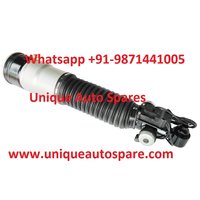

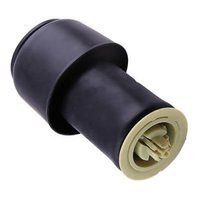
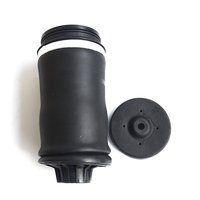
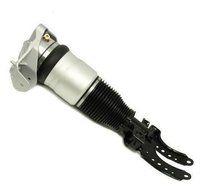


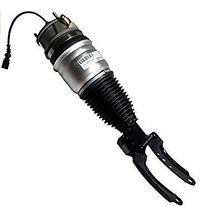
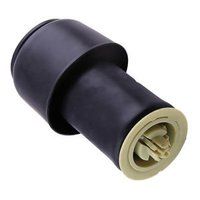
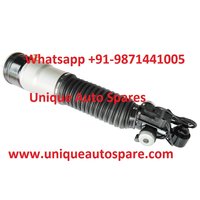

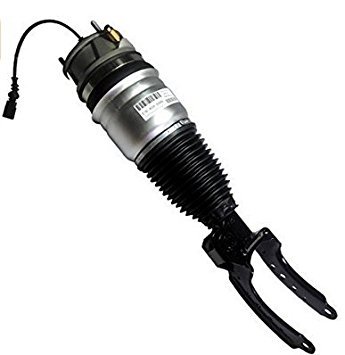









 Send Inquiry
Send Inquiry Send SMS
Send SMS
